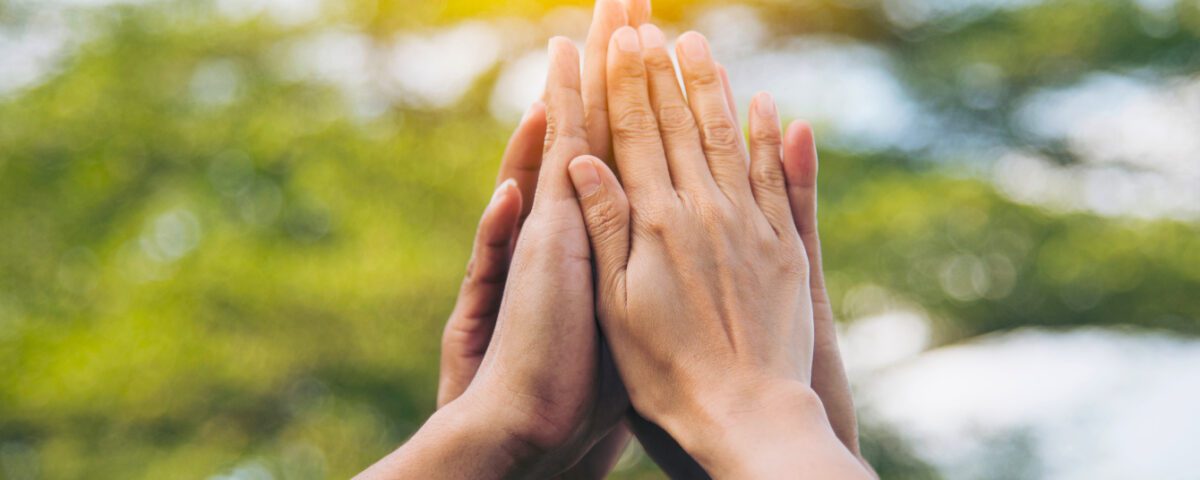
How Your Brand Can Support Mental Health Awareness Month
Thursday 30th May
 by Beth Perrin
by Beth Perrin
Share
May was Mental Health Awareness Month, with Mental Health Awareness Week also taking place halfway through it from 13th-19th May. The two events aim to address the daily challenges faced by those struggling with mental illnesses, destigmatise mental health conditions, advocate for policies that prioritise mental wellbeing and get people talking. 67% of Gen Z consumers agree that brands should care about mental health and 35% of them will even choose to boycott a brand if they believe it has a negative impact on mental health, proving how important it is for businesses to join the conversation and implement efforts to make a positive impact.
Let’s take a look at some ways your brand can not only participate in Mental Health Awareness Month next year, but also support relevant causes and advocate for mental wellbeing on social media and other digital channels throughout the year as a whole.
Create an Infographic
Infographics are a great way to distribute important information in a visually appealing manner and can make tough subjects easier to understand and digest. Consider sharing some self-care tips, facts about mental health conditions or ways to help a loved one, and use eye-catching colours and unique graphics or symbols to illustrate each section.
In the example below, mental health charity Mind outlined some key reminders for anyone struggling with their mental wellbeing, using delicate floral graphics and a calming colour scheme. This makes the tips more interesting and simple to read than if they had been shared as text or bullet points alone.
This #MentalHealthAwarenessWeek share this post and spread the word 👇🏼
— Mind (@MindCharity) May 13, 2024
Regardless of the week, your mental health matters and YOU matter. You don’t have to face it alone.
Huge shout out to worrywellbeing for this gorgeous illustration 🩵 pic.twitter.com/CgI8qkhLkY
Partner Up with a Charity
Mental Health Awareness Month is a great time to launch a collaboration with a charity or non-profit organisation that specialises in mental health. Join forces to share educational content, launch a limited-edition product with proceeds going to the charity, run a Q&A session or consider an Instagram Story takeover.
This year, as part of its ongoing partnership with Alzheimer’s Research UK, the nation’s favourite chocolate brand Cadbury released a line of special ‘Memory Bar Boxes’, featuring six retro Dairy Milk bars wrapped in the brand’s nostalgic packaging. The product was designed to support people living with dementia by stimulating conversation and supporting memory activities. One supporter said: “This campaign from Cadbury is so important, as it gives us and others the opportunity to reflect on our shared memories over the years.”
Cadbury Partners with Alzheimer's Research UK to create Memory Bar Boxes.
— London Live (@LondonLive) May 15, 2024
The nostalgic boxes have been created in response to requests for old Cadbury packaging to help stimulate conversation and support memory activities for people living with dementia and their loved ones. pic.twitter.com/PptrkAlxSS
Additionally, as part of its ongoing partnership with BBC Children In Need, McDonald’s ran a campaign that involved removing the iconic yellow smile from its Happy Meal box, in order to teach kids that it’s okay not to feel happy all the time - and to open up discussions about feelings and emotions. The limited-edition Happy Meal boxes contained sheets of stickers that showcased an array of emotions that children experience, enabling them to illustrate their feelings directly onto the packaging.
The brand also set up an online hub of content for families to access, from creative and interactive play to eBooks and football skills challenges, so they can have honest conversations with their children about feelings and foster positive family environments.
Share Statistics
Statistics are a concrete and conclusive way to show people the facts about mental health and can scientifically back up what you want to say. Search online for relevant studies and share your findings in a social post or blog post, or consider partnering up with a research organisation to conduct a survey yourself in order to gather your own statistics.
In the example below, mental health organisation Rethink chose to share a range of statistics from a survey it had carried out to demonstrate the link between physical activity and mental wellbeing, using eye-catching branded imagery and including a link to an article on its website where people can read more detailed information about the study.
🚨 Our survey found that most of us living with mental illness agree that physical activity is beneficial.
— Rethink Mental Illness (@Rethink_) May 15, 2024
But there are still barriers which impact our ability to get moving.
Find out what we're doing to address this 👉 https://t.co/g8munH4sOK#MentalHealthAwarenessWeek pic.twitter.com/GPRxzPBEZ1
Ask Your Team to Provide Wellbeing Tips
If they feel comfortable being filmed, having their photo taken or even just offering some written advice, consider asking your team members to share their best mental wellbeing tips - or participate in some relevant activities together and post the results on social media. Featuring real people, real stories and real events can help humanise your brand and will make your content feel more down to earth and relatable, which is paramount when discussing personal topics like mental health.
Shining a spotlight on your team’s stories of recovery, resilience and positivity will create an authentic and emotional connection with your followers that transcends typical marketing messages, helping to bring them closer to the issues at hand. Remember that mental health campaigns aren’t about winning new business - instead, they are reputation-building exercises that should aim to show that your brand knows what matters in life, genuinely cares about both its employees and its customers, and ultimately has its priorities right.
For #MentalHealthAwarenessWeek, we focused on ✨ movement ✨
— Space Forge (@Space_Forge) May 28, 2024
From stretching and going to the gym, to painting and playing kinetic games, we spent the week participating in activities that require energy together.
Our team's wellbeing is paramount to a positive workplace 🙌 pic.twitter.com/8tzWSO5o0T
Summary
With 64% of global consumers saying that they choose brands because of their stand on social issues - and 91% of Millennials agreeing that they would switch brands for one which champions a cause - it’s never been more important for brands to take a stand and speak out about key issues such as mental health. Although this year’s Mental Health Awareness Month is over, your brand can still get involved and continue spreading the word about mental wellbeing throughout the year, whether that’s through informative content, charity partnerships or fundraising initiatives. Did you see any impactful campaigns this year from brands or non-profit organisations? How did your business participate? Find us on X @3sixfivepro to let us know.








